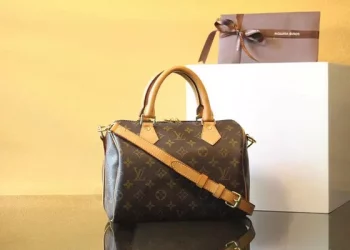Jane Birkin, the British-born actress, muse and singer who found fame in France, became a style icon in the ’60s and maintained that status until she passed away at age 76 on Sunday. But as she told CNN’s Christiane Amanpour in a 2020 interview, “When I’m dead … [people] will possibly only talk about the bag.”
Elena Sheppard
The bag, of course, is the eponymous Birkin: the luxury Hermès handbag that, decades after its release in 1984, remains a status symbol for the rich and famous. The price tag is eye-watering — Birkins sell for anywhere between $10,000 and $450,000 — and the labyrinthine means of getting one adds to their exclusivity.
You can’t simply order a Birkin online or pop into Hermès and buy one. There are waitlists, auctions, vintage sources to be scoured. People stand by for months, or even years, for the Birkin they covet to become available.
Yet it’s tied to a figure whose style was more free-spirited insouciance. Birkin’s chicness was defined by seeming happenstance: enviable bangs that looked home-cut, nipples subtly visible through diaphanous blouses, crocheted dresses worn backwards for a more dramatic neckline, wicker baskets used as purses.
Birkin may have been proven right. She has died and people are talking about the bag as the great definer of her life. But there was also her song “Je T’Aime … Moi Non Plus” — so scandalous it was condemned by the Vatican — her stake in the ground as the ultimate in French girl chic, her films and theatrical performances and her daughters. There were her celebrated musical tours, which extended well into her 70s.
For a woman so multifaceted, bohemian and accomplished, her legacy being defined by competitive luxury is an unfortunate twist. We’d do well to remember her more for her unpretentious spirit and her confident style than the handbag to which she lent her name.
The origins of the Birkin bag explain how she ended up as this unlikely cultural ambassador and reveal that she wasn’t entirely innocent of the high-end couture embodied by her namesake purse. But there is a difference between fashion and luxury, a dichotomy she continued to carve out even when carrying her eponymous handbag.
On a flight from Paris to London in 1981, Birkin was upgraded. Once settled in her new seat, all of Birkin’s things tumbled out of her bag, papers and photos flying everywhere. Her seatmate suggested she use an agenda with a pocket, to which she replied, “What can you do?”
It turned out he could do quite a lot; he was Hermés chief executive Jean-Louis Dumas, and Birkin suggested he make a bag that was smaller than a suitcase but bigger than the Kelly, a smaller Hermés purse named after the actress Grace Kelly.
“I got Hermès to fork out for my charities once I saw the fortune they were making. A certain amount of money every year goes straight to my charity and it will continue to after my death,” she said in the same interview. “So that rather trivial piece of heavy luggage has done a lot of good in the world.”
So, yes, Jane Birkin has died and people are talking about the bag. But her subversion of the bag’s status is how she kept her free-spirited identity even as her name became synonymous with exclusive luxury. Other people might mistake her identity for over-the-top commercial elitism, but she never did.
“It’s very nice that everyone’s got one or wants one. I keep saying to Hermès to make it out of plastic or, even more fun, make it out of cardboard. Then it wouldn’t be so heavy. But if people want to go for the real thing, fine. If they go for copies, that’s fine too,” she told Vogue. “I really don’t think it matters.”





























